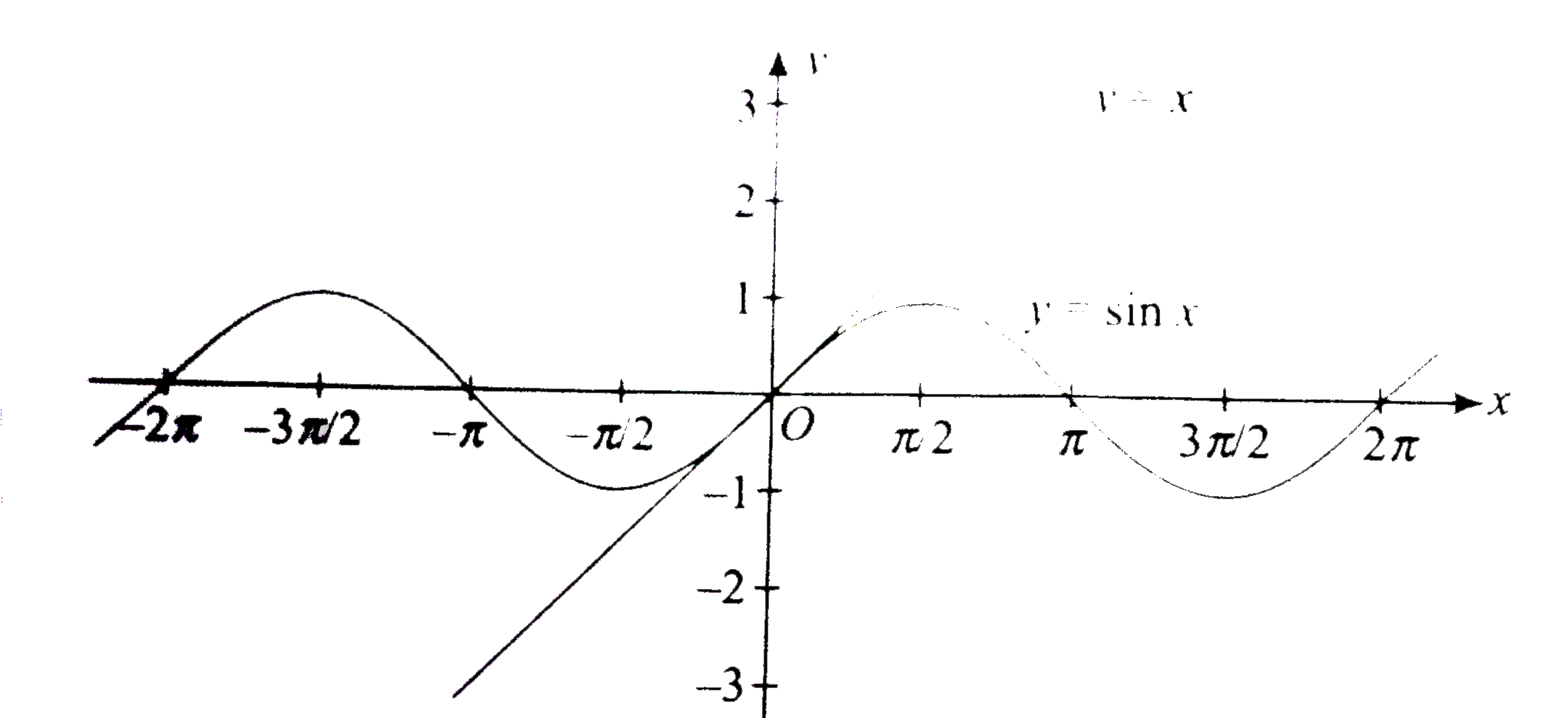Prove that [limx→0sinxx]=0, where [.] represents the greatest integer function.Solution in Tamil
See the graphs of y=x and sinx in the following figure.

From the figure when x→0+,graph of y=x is above the graph of y=sinx
i.e., sinx<x or sinxx<1
⇒ limx→0+sinxx=11−
⇒ [limx→0+sinxx]=0
When x→0−, graph of y=x is below the graph of y=sinx
i.e., sinx<x or sinxx<1 (as x is negative)
⇒ limx→0−sinxx=1−
⇒ [limx→0−sinxx]=0
Thus, [limx→0−sinxx]=0
Topper's Solved these Questions
- BOOK - CENGAGECHAPTER - LIMITSEXERCISE - Exercise 2.110videos
LIMITS
- BOOK - CENGAGECHAPTER - LIMITSEXERCISE - Exercise 2.27videos
LIMITS
- BOOK - CENGAGECHAPTER - JEE 2019EXERCISE - Chapter 109videos
JEE 2019
- BOOK - CENGAGECHAPTER - LINEAR COMBINATION OF VECTORS, DEPENDENT AND INDEPENDENT VECTORSEXERCISE - DPP 1.210videos
LINEAR COMBINATION OF VECTORS, DEPENDENT AND INDEPENDENT VECTORS
Similar Questions
Evaluate: (lim)x→−2+ x2−12x+4
03:06View SolutionIf |f(x)|≤x2, then prove that limx→0f(x)x=0.
08:38View SolutionIf y = y(x) is the solution of the differential equation, xdydx+2y=x2 satisfying y(1) = 1, then y(12) is equal to
01:33View SolutionThe number of integral values of p for which (p+1)ˆi−3ˆj+pˆk,pˆi+(p+1)ˆj−3ˆk and −3ˆi+pˆj+(p+1)ˆk are linearly dependent vectors is q
02:28View SolutionProve that [limx→0sinxx]=0, where [.] represents the greatest integer function.
02:26View Solutionlimx→0[(1−ex)sinx|x|] is (where [.] represents the greatest integer function )
04:51View SolutionThe value of limx→0[xsinx] , where [.] represents the greatest integer function,is
04:59View SolutionSolve (i) limx→1sinx (ii) limx→0+[sinxx]
(iii) limx→0−[sinxx]
(where [.] denotes greatest integer function)05:42View SolutionSolve (i) limx→0+[tanxx]
(ii) limx→0−[tanxx]
(where [.] denotes greatest integer function)05:14View Solutionlimx→0[msinxx] is equal to (where mεI and [.] denotes greatest integer function)
03:58View SolutionThe value of limx→0sinx3[5x] is equal to
[where [.] represent the greatest integer function)06:30View SolutionProve that [limx→0sinxx]=0, where [.] represents the greatest integer function.
02:50View SolutionProve that [limx→0tan−1xx]=0, where [.] represents the greatest integer function.
02:42View Solutionlimx→0[min(y2−4y+11)sinxx] (where [.] denotes the greatest integer function) is
04:47View Solutionlimx→0[(1−ex)sinx|x|] is (where [.] represents the greatest integer function )
03:24View Solution

